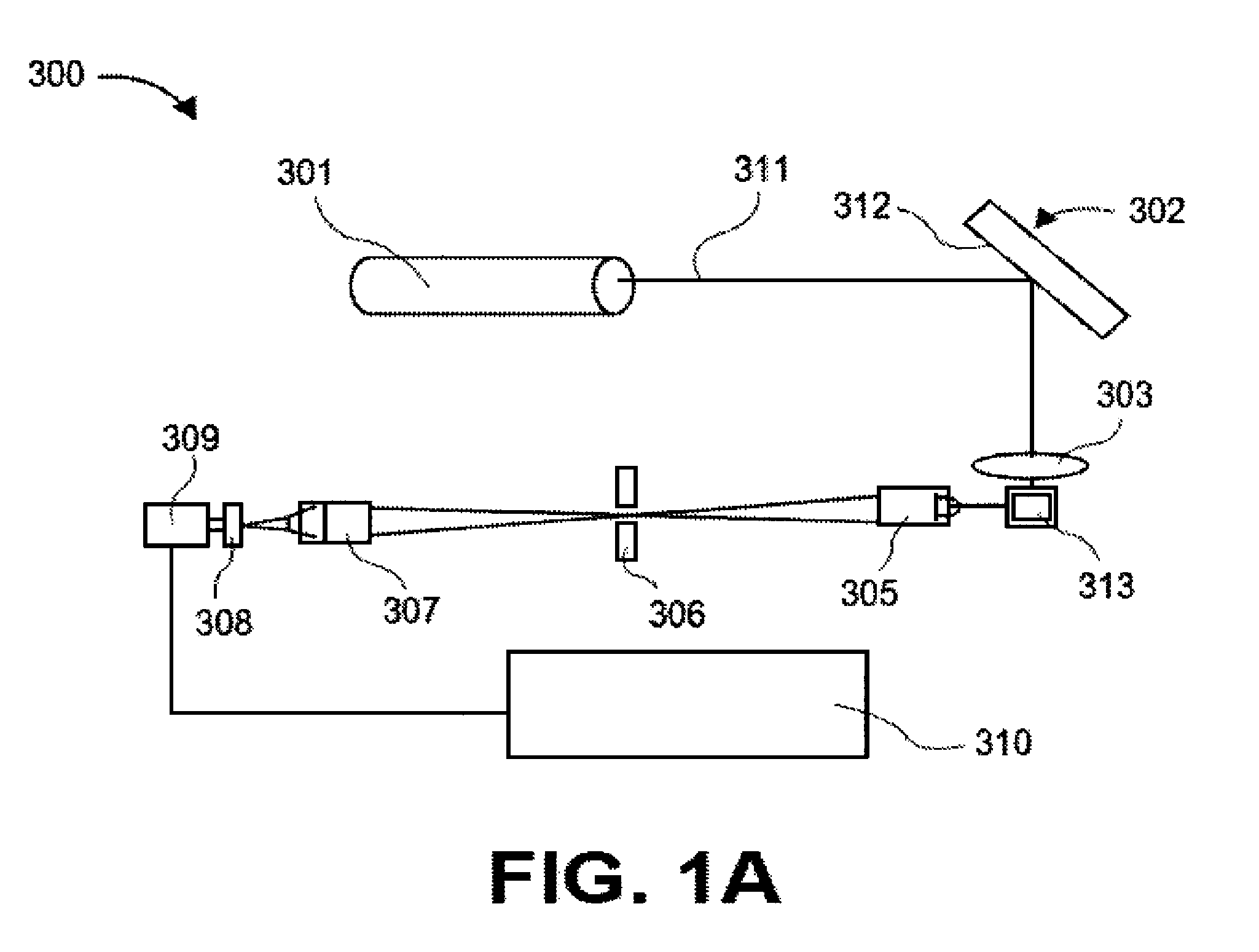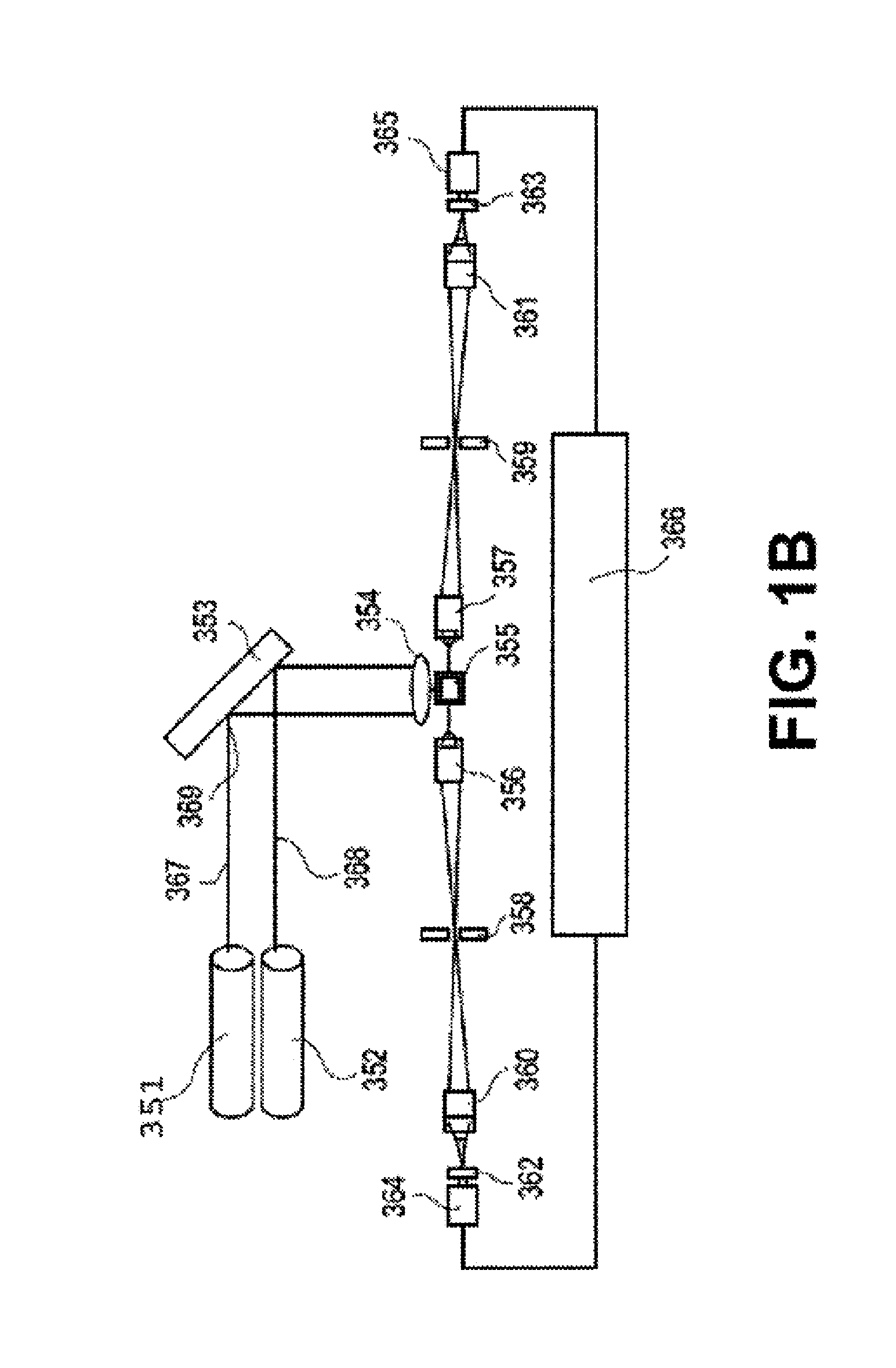[0465]An advantage of the present invention is its robustness. The level of reproducibility allows for more sensitive detection across a broad range of detection. The present invention provides advantages even when the limit of detection is below the typical or expected level of a given marker because the variation at higher levels can be reduced. In some embodiments, the coefficient of variation (CV) of the limit of detection ranges from about 100% to about 1%. In some embodiments, the coefficient of variation (CV) of the limit of detection ranges from about 90% to about 1%. In some embodiments, the coefficient of variation (CV) of the limit of detection ranges from about 80% to about 1%. In some embodiments, the coefficient of variation (CV) of the limit of detection ranges from about 70% to about 1%. In some embodiments, the coefficient of variation (CV) of the limit of detection ranges from about 60% to about 1%. In some embodiments, the coefficient of variation (CV) of the limit of detection ranges from about 50% to about 1%. In some embodiments, the coefficient of variation (CV) of the limit of detection ranges from about 40% to about 1%. In some embodiments, the coefficient of variation (CV) of the limit of detection ranges from about 30% to about 1%. In some embodiments, the coefficient of variation (CV) of the limit of detection ranges from about 20% to about 1%. In some embodiments, the coefficient of variation (CV) of the limit of detection ranges from about 15% to about 1%. In some embodiments, the coefficient of variation (CV) of the limit of detection ranges from about 10% to about 1%. In some embodiments, the coefficient of variation (CV) of the limit of detection ranges from about 5% to about 1%.
[0466]Because of the sensitivity of the methods of the present invention, very small sample volumes can be used. For example, the methods here can be used to measure VEGF in small sample volumes, e.g., 10 ml or less, compared to the standard sample volume of 100 μl. The present invention enables a greater number of samples to provide quantifiable results in small volume samples compared to other methods. For example, a lysate prepared from a typical 1 mm needle biopsy may have a volume less than or equal to 10 μl. Using the present invention, such sample can be assayed. In some embodiments, the present invention allows the use of sample volume under 100 μl. In some embodiments, the present invention allows the use of sample volume under 90 μl. In some embodiments, the present invention allows the use of sample volume under 80 μl. In some embodiments, the present invention allows the use of sample volume under 70 μl. In some embodiments, the present invention allows the use of sample volume under 60 μl. In some embodiments, the present invention allows the use of sample volume under 50 μl. In some embodiments, the present invention allows the use of sample volume under 40 μl. In some embodiments, the present invention allows the use of sample volume under 30 μl. In some embodiments, the present invention allows the use of sample volume under 25 μl. In some embodiments, the present invention allows the use of sample volume under 20 μl. In some embodiments, the present invention allows the use of sample volume under 15 μl. In some embodiments, the present invention allows the use of sample volume under 10 μl. In some embodiments, the present invention allows the use of sample volume under 5 μl. In some embodiments, the present invention allows the use of sample volume under 1 μl. In some embodiments, the present invention allows the use of sample volume under 0.05 μl. In some embodiments, the present invention allows the use of sample volume under 0.01 μl. In some embodiments, the present invention allows the use of sample volume under 0.005 μl. In some embodiments, the present invention allows the use of sample volume under 0.001 μl. In some embodiments, the present invention allows the use of sample volume under 0.0005 μl. In some embodiments, the present invention allows the use of sample volume under 0.0001 μl. In some embodiments, the range of the sample size is about 10 μl to about 0.1 μl. In some embodiments, the range of the sample size is about 10 μl to about 1 μl. In some embodiments, the range of the sample size is about 5 ml to about 1 μl. In some embodiments, the range of the sample size is about 5 μl to about 0.1 μl.
[0467]In some embodiments, the second marker comprises a biomarker, e.g., a protein or a nucleic acid. As disclosed herein, when the first marker or the second marker is a protein, this is understood to encompass a fragment or complex of the protein, or a polypeptide. In embodiments wherein the second marker is such a protein, the limit of detection of the second marker can range from about 10 pg / ml to about 0.1 pg / ml. In some embodiments, the limit of detection of the second marker is less than about 100 pg / ml. In some embodiments, the limit of detection of the second marker is less than about 10 pg / ml. In some embodiments, the limit of detection of the second marker is less than about 5 pg / ml. In some embodiments, the limit of detection of the second marker is less than about 1 pg / ml. In some embodiments, the limit of detection of the second marker is less than about 0.5 pg / ml. In some embodiments, the limit of detection of the second marker is less than about 0.1 pg / ml. In some embodiments, the limit of detection of the second marker is less than about 0.05 pg / ml. In some embodiments, the limit of detection of the second marker is less than about 0.01 pg / ml. In some embodiments, the limit of detection of the second marker is less than about 0.005 pg / ml. In some embodiments, the limit of detection of the second marker is less than about 0.001 pg / ml. In some embodiments, the limit of detection of the second marker is less than about 0.0005 pg / ml. In some embodiments, the limit of detection of the second marker is less than about 0.0001 pg / ml. In some embodiments, the limit of detection of the second marker ranges from about 10 pg / ml to about 0.01 pg / ml. In some embodiments, the limit of detection of the second marker ranges from about 5 pg / ml to about 0.01 pg / ml. In some embodiments, the limit of detection of the second marker ranges from about 1 pg / ml to about 0.01 pg / ml. In some embodiments, the limit of detection of the second marker ranges from about 10 pg / ml to about 0.001 pg / ml. In some embodiments, the limit of detection of the second marker ranges from about 5 pg / ml to about 0.001 pg / ml. In some embodiments, the limit of detection of the second marker ranges from about 1 pg / ml to about 0.001 pg / ml. In some embodiments, the limit of detection of the second marker ranges from about 10 pg / ml to about 0.0001 pg / ml. In some embodiments, the limit of detection of the second marker ranges from about 5 pg / ml to about 0.0001 pg / ml. In some embodiments, the limit of detection of the second marker ranges from about 1 pg / ml to about 0.0001 pg / ml.
[0468]The second marker can be any biomarker indicative of a biological state. Numerous such biomarkers are disclosed herein. The second marker may be measured by the methods of the present invention or may be measured using alternate, e.g., preexisting methods. In some embodiments, the second marker is detected using the methods of the present invention. In some embodiments, the second marker is detected using commercially available kits from a variety of suppliers. These include commercially available kits which can be used to detect the second marker include affinity purified antibodies and conjugates, western blotting kits and reagents, recombinant protein detection and analysis, elisa kits and reagents, immunohistology kits and reagents, sample preparation and protein purification, and protein labeling kits and reagents. Companies providing such kits include Invitrogen, Millipore, R&D Systems, Cogent Diagnostics, Bühlmann Laboratories AG, Quidel, and Scimedx Corporation. Indeed, the methods of the present invention can be combined with any method to detect another biomarker.
[0469]In some embodiments, the second marker is a biomarker that comprises proBNP, IL-1α, IL-1β, IL-6, IL-8, IL-10, TNF-α, IFN-γ, cTnI, VEGF, insulin, GLP-1, TREM1, Leukotriene E4, Akt1, Aβ-40, Aβ-42, or Fas ligand. In some embodiments, the second marker is a cytokine. As disclosed herein, currently over 100 cytokines / chemokines whose coordinate or discordant regulation is of clinical interest, any of which can be detected with the methods of the invention. In some embodiments, the cytokine is G-CSF, MIP-1α, IL-10, IL-22, IL-8, IL-5, IL-21, INF-γ, IL-15, IL-6, TNF-α, IL-7, GM-CSF, IL-2, IL-4, IL-1α, IL-12, IL-17α, IL-1β, MCP, IL-32 or RANTES. In some embodiments, the cytokine is IL-10, IL-8, INF-γ, IL-6, TNF-α, IL-7, IL-1α, or IL-1β. In other embodiments, the second marker is a high abundance protein. In such embodiments, the second marker can be an apolipoprotein, ischemia-modified albumin (IMA), fibronectin, C-reactive protein (CRP), B-type Natriuretic Peptide (which includes BNP, proBNP and NT-proBNP), or Myeloperoxidase (MPO).
[0470]In some embodiments, the methods provided comprise determining a concentration for the first marker, i.e., cTnI or VEGF, and determining a concentration for the second marker if the second marker is a biomarker, e.g., a protein. In some embodiments, the methods provided comprise determining a ratio of a concentration of the first marker compared to a concentration for the second marker. Methods to determine a concentration using the devices and methods of the present invention are disclosed herein. Commercial kits, e.g., commercial ELISA kits, can also be used to determine a protein concentration, e.g., by comparing the level of the biomarker being detected against a standard curve.
 Login to View More
Login to View More 


